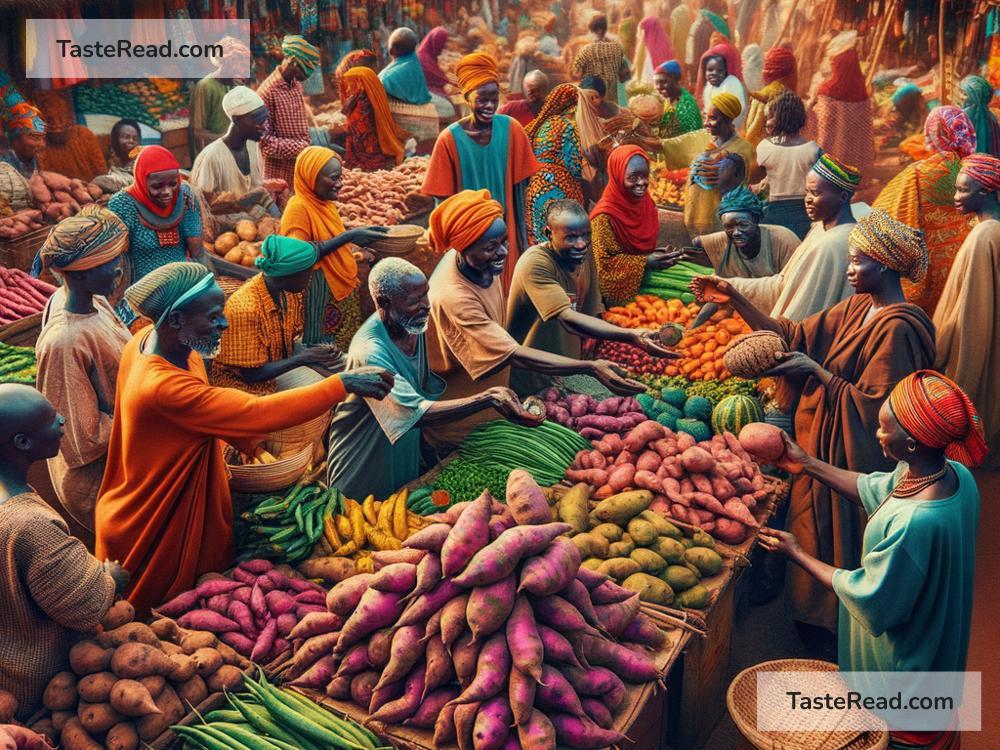The Fascinating Story of Sweet Potatoes in African Culture
Sweet potatoes are one of the most loved and treasured foods across Africa today. Their soft, rich taste and colorful skin make them a favorite in homes, markets, and celebrations. But beyond their flavor, sweet potatoes carry a fascinating story of history, culture, and resilience that ties communities together across the continent.
The Journey to Africa
Sweet potatoes didn’t originate in Africa. They actually come from Central and South America, where indigenous peoples were growing them thousands of years ago. Spanish explorers and traders introduced sweet potatoes to Europe in the 16th century. Around the same time, Portuguese traders brought the crop to various parts of Africa, and it quickly became popular.
Why did sweet potatoes thrive in Africa? Simply put, they were perfect for the continent’s environment. Sweet potatoes grow well in warm climates, require little water, and tolerate poor soil. These qualities made them an ideal food for many African regions where agriculture sometimes faced challenges.
A Lifesaving Crop
Over time, sweet potatoes became more than just another vegetable. In many African countries, they transformed into an important source of food security. Sweet potatoes grow fast and can be harvested in a few months, offering food during times when other crops may fail due to drought or pest infestation. This made them a “lifesaver” for families, especially in times of hardship.
During periods of famine or food shortages, sweet potatoes often stepped in to save the day. Their high nutritional value—especially their content of fiber, vitamins, and antioxidants—makes them a crucial food for communities struggling with malnutrition. The orange-fleshed varieties, rich in vitamin A, have been especially important in fighting vitamin A deficiency in many African countries.
Sweet Potatoes in African Cooking
In African kitchens, sweet potatoes are a key ingredient in many delightful dishes. They are incredibly versatile and can be boiled, roasted, mashed, fried, or even made into soups and desserts. The way sweet potatoes are prepared often depends on the cultural traditions and tastes of the region.
For example, in West Africa, sweet potatoes are sometimes mashed and paired with spicy tomato sauce or used to complement fish stews. In East Africa, you might find sweet potato chapati (flatbread) or fried sweet potato chips being served as a snack. In Southern Africa, roasted sweet potatoes are a common street food, filling the air with their sweet aroma in bustling markets.
Beyond being delicious, sweet potato dishes often bring people together. Families gather to prepare and share meals, while communities use sweet potatoes in celebrations and ceremonies, symbolizing abundance and unity.
Sweet Potatoes and African Innovation
African farmers have not only embraced sweet potatoes but continually improved how they grow them. Agricultural innovations have led to the development of new sweet potato varieties that produce higher yields and resist disease. One remarkable example is the “orange-fleshed sweet potato” (OFSP), promoted for its rich vitamin A content.
Governments, scientists, and organizations have collaborated to introduce these special sweet potatoes to rural areas, where people need better nutrition. Women farmers, in particular, have played a leading role in cultivating and spreading these crops—helping their families and communities lead healthier lives. The success of sweet potatoes is proof of Africa’s creativity and resilience in building brighter futures.
Sweet Potatoes in Culture and Tradition
Sweet potatoes also hold cultural significance in many parts of Africa. In some communities, they are seen as a symbol of good fortune and prosperity. They appear in traditional songs, folk tales, and proverbs, reflecting their importance to people’s everyday lives.
For instance, in Uganda, sweet potatoes are deeply tied to cultural identity. Families take pride in growing them, and special varieties are even used in rituals or passed down through generations. Similarly, some West African communities use sweet potatoes during harvest festivals to honor the earth and give thanks for its bounty.
It’s amazing how this humble root crop has woven itself into the fabric of African life—not just as food, but as a source of connection and meaning.
The Future of Sweet Potatoes in Africa
Today, sweet potatoes continue to grow in importance. With changing climates, rising populations, and increasing food demands, sweet potatoes offer a reliable solution for fighting hunger and poverty. Governments, farmers, and researchers are working together to increase production, improve farming methods, and ensure sweet potatoes are available to everyone.
At the same time, sweet potatoes are gaining recognition worldwide as a “superfood” for their health benefits. African farmers stand to benefit from global markets as demand for sweet potatoes increases abroad.
Conclusion
The story of sweet potatoes in Africa is one of adaptation, resilience, and community. Arriving centuries ago as an unfamiliar crop, sweet potatoes have become a beloved part of African culture, supporting families and inspiring innovations along the way. From their vital role in nutrition to their presence in kitchens and traditions, sweet potatoes remind us of the incredible ways food can bring people together.
So next time you enjoy a dish with sweet potatoes, remember their journey and the rich cultural significance they hold in Africa—and celebrate the beauty of this unassuming yet powerful root crop.


